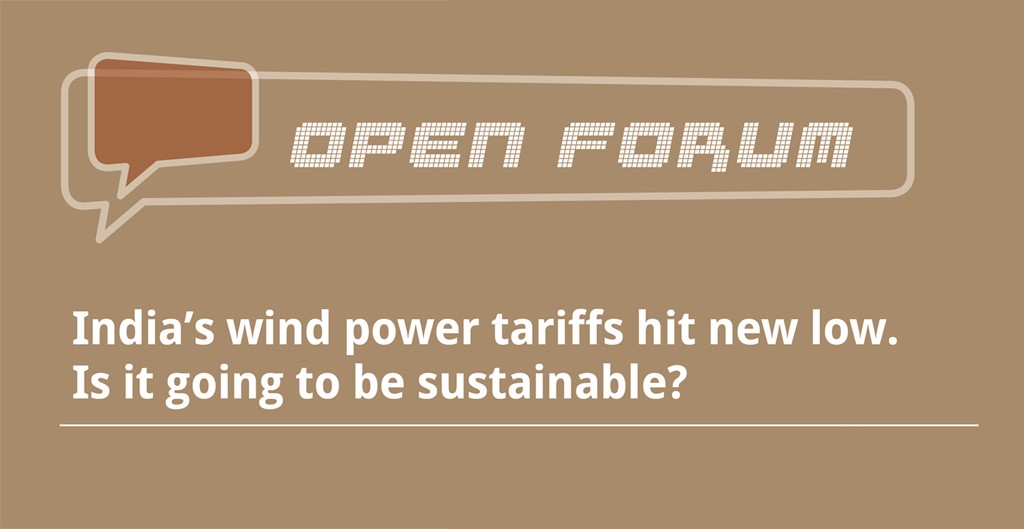India’s wind power tariffs hit new low.
By EPR Magazine Editorial April 3, 2017 2:59 am IST
By EPR Magazine Editorial April 3, 2017 2:59 am IST

Is it going to be sustainable?
Wind energy availability is abundant and is an untapped resource of renewable energy with huge potential. Gaining the momentum in tapping of renewable energy into our regular use is one of the challenges we are facing at present. The latest India’s wind power tariffs hitting new low is an astonishment but not impossible to be sustainable. On investors’ point of view the ROI is long time due to seasonal power generation and high investment cost, it can be improved by localising some more components so that many investors start investing. More installation will happen in various parts of the country and the seasonal power generation can also be managed.
The unexplored resource availability has the potential to sustain the growth of wind energy sector in India in the years to come. Thus, considerable efforts are being taken in India in energy transition from fossil fuels to other sustainable systems like wind to meet India’s power generation requirements.

– Sudarsanarajan Srikanthan,
Sr. Business Development Manager,
Schmersal India Pvt Ltd
23rd February, 2017 will be remembered as a historic day in the Indian Wind industry, with the first tariff-based bidding being held and having received bids of less than Rs 4/- per unit. Renewables have received a shot in the arm and will witness a growth in volumes in the country. Currently wind projects are limited to 7-8 wind rich states in the country where capacity addition continues. Tariff based bidding is a game changer in the industry, coupled with indirect support from the government like central transmission utility (CTU) network connectivity will open new markets and lead to expansion of wind energy across the country.The sub Rs 4/- per unit tariffs are competitive due to multiple factors viz new breed of efficient turbines, softening of interest rate regime, lowering of return expectations by investors and the opportunity to enter new markets. This will help the industry to achieve the Government’s target of 60 GW in wind as part of the 175 GW target of renewable energy by 2022. We expect the current bid results to accelerate wind capacity addition in the country and would offer significantly higher market potential for market leaders like Suzlon.
Wind tariff is decided by competitive (reverse) bidding process for the first time in India. As the tariff was re-discovered in a different way that worked for other RE sources but it may or may not sustain for wind energy and time will decide whether the change in tariff is sustainable. Strength of techno-financial restructuring to make the projects viable before execution of initial projects will decide the sustainability of the bidding process.

– Dr Sanjiv Kawishwar, Sr. Vice President, ReGen Powertech Pvt Ltd
Tariff is always dependent on many factors. It (sustainability) will depend on lot of factors including wind speed at a particular site and interest rate on the debt. Also the OEMs have to reduce their margins to reduce the CAPEX for operators. So, in the process everybody will have to revise their return expectations to some extent to make a sustainable ecosystem amidst reduced tariff.

– UB Reddy, Managing Director,
Enerfra Projects (India) Pvt Ltd
We use cookies to personalize your experience. By continuing to visit this website you agree to our Terms & Conditions, Privacy Policy and Cookie Policy.